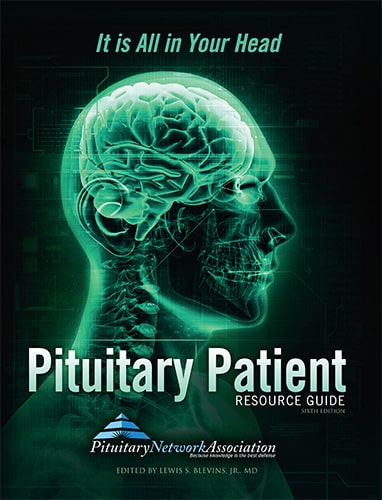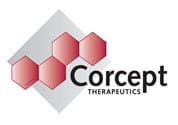News Articles February 2022
Written on 04 February 2022.
PNA Highlights May 2024

“Take care of your body. It’s the only place you have to live in.”
— Jim Rohn
PNA Medical Corner: Age and progression-free survival with nonfunctioning pituitary adenomas

Dr. John Atkinson

Dr. Jamie Van Gompel

Dr. Maria Peris Celda
This month the PNA Medical Corner focuses on a study coauthored by three members of the PNA: Drs. John Atkinson, Jamie Van Gompel and Maria Peris Celda. They conclude that older patients with nonfunctioning pituitary tumors had better progression-free survival rates, even when they underwent aggressive surgery.
https://pubmed.ncbi.nlm.nih.gov/38669710/
Correlation of older age with better progression-free survival despite less aggressive resection in nonfunctioning pituitary adenomas
Yuki Shinya 1 2, John L D Atkinson 1, Dana Erickson 3, Irina Bancos 3, Carlos D Pinheiro Neto 4, Caroline J Davidge-Pitts 3, Maria Peris Celda 1, Justine S Herndon 3, Sukwoo Hong 1 2, Jamie J Van Gompel 1
Abstract
Objective: Nonfunctioning pituitary adenomas (NFPAs) present at a wide range of ages; it is possible that variable
outcomes are based on patient age at presentation. This study aimed to explore long-term outcomes of patients with NFPAs following endonasal transsphenoidal surgery (ETS), considering age stratification.
Methods: This retrospective study included 228 patients with NFPAs who underwent ETS, with a median follow-up period of 63 months. The outcomes included progression-free survival (PFS) rates and neurological and endocrinological outcomes. Age-stratified Kaplan-Meier and Cox proportional hazards analyses were performed. Patients were classified into four age groups: ≤ 49, 50-59, 60-69, and ≥ 70 years.
Results: Age-stratified analysis showed a significant correlation between age and PFS in NFPAs (5-year PFS rates: 63.0% in those ≤ 49 years, 76.7% in those 50-59 years, 85.0% in those 60-69 years, and 88.1% in those ≥ 70 years; p = 0.001, log-rank test). Bivariate (HR 1.03, 95% CI 1.01-1.05; p = 0.001) and multivariable (HR 1.03, 95% CI 1.02-1.05; p = 0.001) analyses demonstrated that older age was significantly associated with longer PFS. Multivariable analysis also demonstrated that smaller maximum tumor diameter (HR 0.77, 95% CI 0.60-0.99; p = 0.036) and gross-total resection (HR 8.55, 95% CI 3.90-18.75; p = 0.001) were significantly associated with longer PFS. Multivariable logistic regression analysis demonstrated that only younger age was associated with postoperative improvement of male hypogonadism (HR 0.91, 95% CI 0.84-0.99; p = 0.019). Other postoperative neurological and endocrinological outcomes were not significantly associated with age.
Conclusions: Older patients with NFPAs treated with ETS demonstrated a longer PFS. Of endocrinological outcomes studied, only male hypogonadism improvement was associated with younger patient age.
Keywords: age-dependent outcome; endonasal transsphenoidal surgery; nonfunctioning pituitary adenomas; pituitary surgery
The FDA has approved NGENLA (somatrogon-ghla)
The FDA has approved NGENLA (somatrogon-ghla), a once-weekly, human growth hormone analog indicated for treatment of pediatric patients aged three years and older who have growth failure due to an inadequate secretion of endogenous growth hormone.
Count on your Xeris CareConnection™ Team for unparalleled Cushing’s Support
Cushing’s can be challenging, but there is support so patients can feel like themselves again. The main goal of treating Cushing’s is to get cortisol levels back to normal. This Pituitary Awareness Month, Xeris Pharmaceuticals® is highlighting the importance of one-on-one support for patients living with Cushing’s Syndrome and support for HCPs treating Cushing’s Syndrome.
Sign up to get dedicated support:
Patients: Sign up for support | Recorlev® (levoketoconazole)
HCP’s: Connect with Xeris support | RECORLEV® (levoketoconazole)
Have more questions? Call for more support at 1-844-444-RCLV (7258)
Copyright © 2024 Pituitary Network Association All rights reserved.
Disclaimer: PNA does not engage in the practice of medicine. It is not a medical authority, nor does it claim to have medical expertise. In all cases, PNA recommends that you consult your own physician regarding any course of treatment or medication.
Our mailing address is:
Pituitary Network Association
P.O. Box 1958
Thousand Oaks, CA 91358
(805) 499-9973 Phone - (805) 480-0633 Fax
Email info@pituitary.org
You are receiving this Newsletter because you have shown interest in receiving information about our activities.
If you do not want to receive any more emails from PNA, Unsubscribe.
News Articles May 2024
Does a form of dwarfism improve cardiovascular risk?
A study in the Journal Med looks at the longevity of people with Laron’s Syndrome, who have low-growth hormone signaling that causes a form of dwarfism but may also confer lower risk of cancer and heart disease. Read more in the Daily Mail: https://tinyurl.com/5cdmafaj or consult the original study: https://tinyurl.com/2pvzzbev
Case study: Surgical Treatment of Pituitary Macroadenomas
A study published on Cureus.com looks at the case of a 48-year old woman with a pituitary macroadenoma. Surgeons removed the tumor but she suffered post-operative complications that required extensive management. They conclude that this type of surgery is complex and requires individualized care.
Acromegalic receives special-made shoes
An article on Fox5dc.com features the story of an acromegaly patient in Venezuela who holds the record for the world’s biggest feet, according to the Guinness Book of World records. The man, named Jeison Rodriguez Hernandez, has size 26 feet and gets his shoes special-made a company in Germany. Read more: https://www.fox5dc.com/news/man-with-worlds-largest-feet-receives-new-custom-shoes
Study: Female Cushing’s patients develop more new diseases than men after treatment
An article in Cushing’s Disease news looks at a study published in the journal Endocrinology, Diabetes & Metabolism. Researchers found that women were more likely to develop additional diseases than men, when in remission after treatment for Cushing’s syndrome. Read more: https://cushingsdiseasenews.com/news/more-new-disorders-women-than-men-after-cushings-remission-study/
May 2024 Research Articles
Pituitary Surgery
Cushing’s
Hormonal Health
Hypogonadotropic Hypogonadism.
Diagnosis and treatment of hypogonadism in men seeking to preserve fertility – what are the options?
Pituitary Tumors
Disulfiram mediated anti-tumour effect in pituitary neuroendocrine tumours by inducing cuproptosis.
A long-term prognosis study of human USP8-mutated ACTH-secreting pituitary neuroendocrine tumours.
Immune landscape and progress in immunotherapy for pituitary neuroendocrine tumors.
PNA Spotlight: Dr. Adam Mamelak
 This month the PNA Spotlight focuses on Dr. Adam Mamelak, a neurosurgeon and co-director of the Pituitary Center at Cedars Sinai Medical Center in Los Angeles. Dr. Mamelak earned his B.A. in Physics at Tufts University and earned his MD from Harvard Medical School. He did a surgical internship and then a residency at the University of California at San Francisco Medical Center. He did a fellowship at the Epilepsy Research Laboratory at UCSF, and another postdoctoral fellowship in neuroscience at the California Institute of Technology & Huntington Medical Research Institutes in Pasadena, California. Dr. Mamelak was kind enough to answer a series of questions from the PNA.
This month the PNA Spotlight focuses on Dr. Adam Mamelak, a neurosurgeon and co-director of the Pituitary Center at Cedars Sinai Medical Center in Los Angeles. Dr. Mamelak earned his B.A. in Physics at Tufts University and earned his MD from Harvard Medical School. He did a surgical internship and then a residency at the University of California at San Francisco Medical Center. He did a fellowship at the Epilepsy Research Laboratory at UCSF, and another postdoctoral fellowship in neuroscience at the California Institute of Technology & Huntington Medical Research Institutes in Pasadena, California. Dr. Mamelak was kind enough to answer a series of questions from the PNA.
His answers follow.
• What inspired you to choose your career path?
I was inspired to become a neurosurgeon based on a sincere desire to understand how the brain works, combined with the need to have an impactful role in the care of patients. As I looked at various career paths in medicine, only neurosurgery seem to fulfill that twin desire. Once I began working as a neurosurgeon, I was drawn to the field of pituitary tumors, both out of a fascination with the complex interplay between the brain, bodily hormones, and overall health, as well as a fascination with the surgical methods that are unique to this area of neurosurgery. Fortunately, my inspiration has proved to be entirely correct. In my practice I can treat patients with complex diseases in a hands-on way. But at the same time, I have the opportunity to advance the field forward through research clinical trials and other interactions.
• What is the primary focus of your work/research?
The primary focus of my work is in developing fluorescent markers to detect tumors intraoperatively. I have helped to develop an imaging system that relies on a protein derived from scorpion venom which, when attached to a near-infrared dye, is taken up by tumors and literally turns them fluorescent during surgery. This allows surgeons to get safer and more complete removal of the tumor while avoiding injury to the surrounding structures such as the pituitary gland or stalk. I have also done substantial work in the development of surgical techniques for the removal of pituitary masses.
• What do you consider to be the future of your field?
In my opinion, the future of our field will see the progressive elimination of the need for surgery. The development of medical therapies will shrink or eliminate tumors and correct hormonal imbalances without the need to operate. Furthermore, the development of stem cell transplants that can regenerate pituitary function is an exciting new horizon. Much like the transplantation of pancreatic cells for patients with insulin-dependent diabetes, there is hope that stem cells from the pituitary gland can be transplanted to regenerate normal hormone production after tumors or other treatments lead to their loss.
• What should patients know about your field/what deserves more recognition/awareness?
The most critical thing for patients to know about the field of pituitary disorders and pituitary tumors in general is that even though these tumors are very common, the typical neurosurgeon treats very few of them in a given year. Patients may be surprised to know that the average neurosurgeon in a busy clinical practice performs no more than 1-3 pituitary operations in a year! Substantial data demonstrates that surgeons who perform at least 30-50 pituitary surgeries a year have much better and safer outcomes. This impact is further realized for more complex situations such as craniopharyngiomas and meningiomas, where only surgeons with significant experience in endoscopic methods will be able to remove these growths safely. Patients should be aware that they should seek out expert providers before any surgery is undertaken, not after the fact. This is under-recognized. This concern must also be more recognized by insurers, as expert and efficient pituitary surgical care results in lower costs to them as well.
• What would you like to convey about yourself to your patients?
I would like my patients to know that I am completely dedicated to their care. My primary focus is figuring out what is the best individual solution for a specific patient. For some patients, surgery is appropriate. And for many others, observation alone or medical treatment is the correct solution. Even though I am a surgeon, I am by no means biased toward surgery. In fact, I tend to take a conservative approach in many situations. However, once surgery is appropriate, my expertise and experience – as well as the comprehensive care available through the pituitary program at Cedars Sinai – will help ensure a smooth and optimal outcome.
• Why did you get involved with the PNA; what is the extent of your involvement?
My involvement with the PNA is to provide a resource and become a patient advocate. PNA does a great job in making patients aware of the signs and symptoms of pituitary disease as well as treatment options to maximize care. It provides a great resource for helping patients navigate the complex health care system. As a physician and patient advocate, I primarily serve as a reference point for patients seeking information or for outside groups seeking expert consultation.
April 2024 Research Articles
Pituitary Surgery
Hypopituitarism
Diagnosis and therapeutic approach to bone health in patients with hypopituitarism.
Acromegaly/Pseudoacromegaly
Pseudoacromegaly-A challenging entity in the endocrine clinic: A systematic review.
MEN-1
The lesion detection rate of Ga-68 DOTATATE PET/MR in multiple endocrine neoplasia type 1.
Imaging
Pituitary Cancer
Pituitary gland metastasis of breast cancer presenting as diabetes insipidus: A case report.
News Articles April 2024
PET/MRI and Cushing’s Disease
A study in the Journal of Nuclear Medicine finds that PET/MRI may be more effective in diagnosing Cushing’s Disease compared to MRI alone Read more:
Patient with hypothyroidism, Addison’s delivers twins
An article in the Times of India recounts that story of a woman whose ovaries were not functioning due to Addison’s disease and hypothyroidism. Once treated, her condition subsided and she was able to conceive and give birth to twins, a remarkable feat. Read more here:
Study explores link between erectile dysfunction and gaming
Researchers in China looked at the effect long hours of gaming had in men aged 40-69 and found higher levels of TSH, which are involved in sperm production and hypothesize a link between screen time and elevated risk of erectile dysfunction. Read more here:
Patient story: ectopic Cushing’s went undiagnosed for years
A story in Cushing’s Disease News looks at a study concerning a man whose ectopic Cushing’s, caused by a lung tumor, took many years to be diagnosed. Researchers blame ignorance on the part of nonendocrine providers. Read more here:
PNA Medical Corner: Fluid discharge protocols after surgery

 This month the PNA Medical Corner features an article co-authored by multiple members of the PNA: Drs. Ho, Fleseriu, Little, Kaiser, and Melmed. It proposes a new standard for clinical classification for pituitary neoplasms.
This month the PNA Medical Corner features an article co-authored by multiple members of the PNA: Drs. Ho, Fleseriu, Little, Kaiser, and Melmed. It proposes a new standard for clinical classification for pituitary neoplasms.
A proposed clinical classification for pituitary neoplasms to guide therapy and prognosis
- PMID: 38301678 DOI: 10.1016/S2213-8587(23)00382-0
Abstract


 No comprehensive classification system that guides prognosis and therapy of pituitary adenomas exists. The 2022 WHO histopathology-based classification system can only be applied to lesions that are resected, which represent few clinically significant pituitary adenomas. Many factors independent of histopathology provide mechanistic insight into causation and influence prognosis and treatment of pituitary adenomas. We propose a new approach to guide prognosis and therapy of pituitary adenomas by integrating clinical, genetic, biochemical, radiological, pathological, and molecular information for all adenomas arising from anterior pituitary cell lineages. The system uses an evidence-based scoring of risk factors to yield a cumulative score that reflects disease severity and can be used at the bedside to guide pituitary adenoma management. Once validated in prospective studies, this simple manageable classification system could provide a standardised platform for assessing disease severity, prognosis, and effects of therapy on pituitary adenomas.
No comprehensive classification system that guides prognosis and therapy of pituitary adenomas exists. The 2022 WHO histopathology-based classification system can only be applied to lesions that are resected, which represent few clinically significant pituitary adenomas. Many factors independent of histopathology provide mechanistic insight into causation and influence prognosis and treatment of pituitary adenomas. We propose a new approach to guide prognosis and therapy of pituitary adenomas by integrating clinical, genetic, biochemical, radiological, pathological, and molecular information for all adenomas arising from anterior pituitary cell lineages. The system uses an evidence-based scoring of risk factors to yield a cumulative score that reflects disease severity and can be used at the bedside to guide pituitary adenoma management. Once validated in prospective studies, this simple manageable classification system could provide a standardised platform for assessing disease severity, prognosis, and effects of therapy on pituitary adenomas.
PNA Highlights March 2024

“We are what we repeatedly do. Excellence, then, is not an act, but a habit.“
— Will Durant
PNA Medical Corner: MRI for Cushing’s
7T MRI for Cushing’s Disease: A Single Institutional Experience and Literature Review
PMID: 38365424 DOI: 10.3174/ajnr.A8209
Abstract
Background and purpose: Cushing disease is typically caused by a pituitary adenoma that frequently is small and challenging to detect on conventional MRI. High field strength 7T MRI can leverage increased signal-to-noise and contrast-to-noise ratios compared to lower-field strength MRI to help identify small pituitary lesions. We aim to describe our institutional experience with 7T MRI in patients with Cushing disease and perform a review of the literature.
Materials and methods: A retrospective analysis of 7T MRI findings in patients with pathology proven cases of Cushing disease from a single institution, followed by a review of the literature on 7T MRI for Cushing disease.
Results: Our institutional experience identified Cushing adenomas in 10/13 (76.9%) patients on 7T, however only 5/13 (38.5%) lesions were discrete. Overall, the imaging protocols used were heterogeneous in terms of contrast dose as well as type of post-contrast T1-weighted sequences (Dynamic, 2D vs 3D, and type of 3D sequence). From our institutional data, specific post-gadolinium T1-weighted sequences were helpful in identifying a surgical lesion as follows: Dynamic Contrast Enhanced 2/7 (28.6%), 2D FSE 4/8 (50%), 3D SPACE 5/6 (83.3%), and 3D MPRAGE 8/11 (72.7%). The literature review identified Cushing adenomas in 31/33 (93.9%) patients on 7T.
Conclusions: 7T MRI for pituitary lesion localization in Cushing disease is a new technique with imaging protocols that varied widely. Further comparative research is needed to identify the optimal imaging technique as well as to assess the benefit of 7T over lower-field strength MRI.
Abbreviations: MRI = Magnetic Resonance Imaging, CT = Computed Tomography, 7T = 7 Tesla, DCE = Dynamic Contrast Enhanced.
© 2024 by American Journal of Neuroradiology.
The FDA has approved NGENLA (somatrogon-ghla)
The FDA has approved NGENLA (somatrogon-ghla), a once-weekly, human growth hormone analog indicated for treatment of pediatric patients aged three years and older who have growth failure due to an inadequate secretion of endogenous growth hormone.
Count on your Xeris CareConnection™ Team for unparalleled Cushing’s Support
Cushing’s can be challenging, but there is support so patients can feel like themselves again. The main goal of treating Cushing’s is to get cortisol levels back to normal. This Pituitary Awareness Month, Xeris Pharmaceuticals® is highlighting the importance of one-on-one support for patients living with Cushing’s Syndrome and support for HCPs treating Cushing’s Syndrome.
Sign up to get dedicated support:
Patients: Sign up for support | Recorlev® (levoketoconazole)
HCP’s: Connect with Xeris support | RECORLEV® (levoketoconazole)
Have more questions? Call for more support at 1-844-444-RCLV (7258)
Copyright © 2024 Pituitary Network Association All rights reserved.
Disclaimer: PNA does not engage in the practice of medicine. It is not a medical authority, nor does it claim to have medical expertise. In all cases, PNA recommends that you consult your own physician regarding any course of treatment or medication.
Our mailing address is:
Pituitary Network Association
P.O. Box 1958
Thousand Oaks, CA 91358
(805) 499-9973 Phone - (805) 480-0633 Fax
Email info@pituitary.org
You are receiving this Newsletter because you have shown interest in receiving information about our activities.
If you do not want to receive any more emails from PNA, Unsubscribe.
News Articles March 2024
Comedian Amy Schumer battles Cushing’s
Actress and comedian Amy Schumer revealed that she has been dealing with exogenous Cushing’s Syndrome, apparently triggered by steroid shots. Read more:
Here is a Q and A about it from the University of Virginia: Read more:
4th dose of Pfizer Covid vaccine linked to expansion of pituitary tumor
The Journal Cureus features a case report from Thailand about a woman who experienced sudden blindness after taking the 4th Pfizer Covid vaccine. Doctors believe it caused a pre-existing pituitary tumor to enlarge and press on her optic chiasm Read more here:
Article on the case report: Read more here:
Pituitary Journey: Headaches, enlarged hands lead to diagnosis
An article in ClickonDetroit.com tells the story of a woman who suffered from debilitating headaches for more than a year, and then started noticing her hands aan feet were getting bigger. After multiple trips to the doctor and the emergency room, she demanded an MRI, and that’s when she got the diagnosis: acromegaly. Read more here:
March 2024 Research Articles
Pituitary Tumors
Alternations of Blood Pressure Following Surgical or Drug Therapy for Prolactinomas.
Pituitary Surgery
Sphenoid Sinus Mucosal Flap after Transsphenoidal Surgery-A Systematic Review.
Prognostic factors for surgical treatment of prolactin-secreting pituitary adenomas.
Cushings
Case report: Complete restoration of the HPA axis function in Cushing’s disease with drug treatment.
Acromegaly
The clinical and biochemical spectrum of ectopic acromegaly.
Surgical outcomes in patients with acromegaly: Microscopic vs. endoscopic transsphenoidal surgery.
Long-term Depot Specific Changes in Adipose Tissue after Treatment of Acromegaly.
Neuroendocrine Tumors
Clinicopathological analysis of densely and sparsely granulated somatotroph tumors of pituitary.
FSH-producing pituitary neuroendocrine tumor as a cause of ovarian hyperstimulation syndrome.
Pituitary Cancer
Childhood pituitary issues
Hormonal Health
Current Insights in Prolactin Signaling and Ovulatory Function.
COVID and the Pituitary
Available Now!

The Pituitary Patient Resource Guide Sixth Edition is now available! Be one of the first to have the most up-to-date information. The Pituitary Patient Resource Guide a one of a kind publication intended as an invaluable source of information not only for patients but also their families, physicians, and all health care providers. It contains information on symptoms, proper testing, how to get a diagnosis, and the treatment options that are available. It also includes Pituitary Network Association's patient resource listings for expert medical care.













